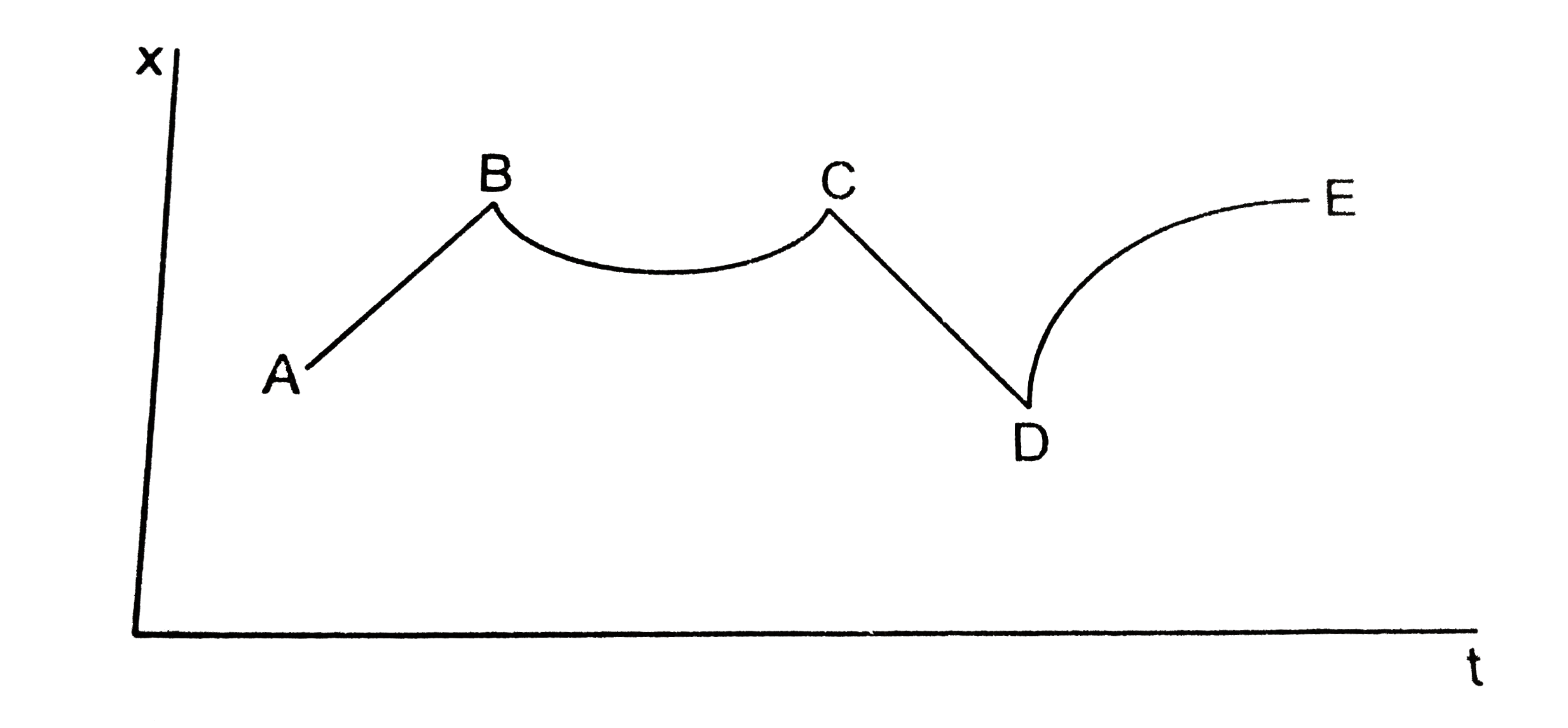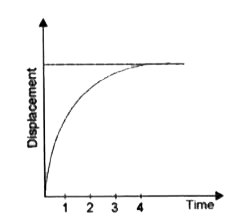The displacement of a particle as a function of time is shown in the figure. The figure shows that
 Solution in Telugu
Solution in Telugu
The particle starts with certain velocity but the motion is retarded and finally the particle stops
The velocity of the particle is constant throughout
The acceleration of the particle is constant throughout
The particle starts with constant velocity, then motion is accelerated and finally the particle moves with another constant velocity
The correct Answer is:A
Step by step video, text & image solution for The displacement of a particle as a function of time is shown in the figure. The figure shows that by Physics experts to help you in doubts & scoring excellent marks in Class 11 exams.
Updated on:21/07/2023Topper's Solved these Questions
- MOTION IN A STRAIGHT LINEBook:AAKASH SERIESChapter:MOTION IN A STRAIGHT LINEExercise:Exercise 2A
Explore 30 Videos
- MOTION IN A STRAIGHT LINEBook:AAKASH SERIESChapter:MOTION IN A STRAIGHT LINEExercise:Exercise -2
Explore 76 Videos
- MOTION IN A STRAIGHT LINEBook:AAKASH SERIESChapter:MOTION IN A STRAIGHT LINEExercise:Problems Based On Calculus
Explore 28 Videos
- MOTION IN A PLANE Book:AAKASH SERIESChapter:MOTION IN A PLANE Exercise:Practice Exercise
Explore 84 Videos
- NEWTONS LAWS OF MOTION Book:AAKASH SERIESChapter:NEWTONS LAWS OF MOTION Exercise:ADDITIONAL PRACTICE EXERCISE PRACTICE SHEET (ADVANECED) (Matrix Matching Type Questions)
Explore 1 Video
Similar Questions
(A): Displacement of a body may be zero when distance travelled by it is not zero.
(R) : The displacement is the longest distance between initial and final positions..
View SolutionA person travels along a straight road for half the distance with velocity V1 and the remaining half distance with velocity V2 the average velocity is given by
View SolutionThe motion of a particle along a straight line is described by the function s=6+4t2−t4
in SI units.Find the velocity ,acceleration ,at t=2s,and the average velocity during 3rd second.
View SolutionA person runs along a circular path of radius 5m. Find the magnitude of the displacement if he runs all the way around the circle ?
View SolutionThe system shown in the figure is given an acceleration 'a' towards left. Assume all contact surfaces to be smooth (m: mass of the sphere) The magnitude of the contact force between wedge and sphere between wedge and sphere at A is xmg√3 then 'x' is

View SolutionFigure shows the displacement of a particle going along the X-axis as a function of time. The force acting on the particle is zero in the region

View SolutionThe displacement of a particle as a funtion of time is shown in the figure. The figure shows that
View SolutionThe displacement time curve of a particle is shown in the figure. The external force acting on the particle is :
View SolutionDisplacement time graph of a particle moving in a straight line is a shown in figure.
View SolutionThe displacement of a particle as a function of time is shown in figure. The figure indicates that
(##MOT_CON_NEET_PHY_C23_E02_025_Q01.png" width="80%">
View Solutionvelocity time graph of a particle is shown in figure. Find displacement of the particle.
View SolutionThe displacement of a particle as a function of time is shown in the figure. The figure shows that
View SolutionThe displacement of a particle as a function of time is shown in the figure. The figure shows that

View SolutionThe displacement of a body as a function of time is shown in figure. The figure indicates that

View SolutionFigure shows the displacement of a particle going along the X-axis as a function of time. The force acting on the particle is zero in the region

View Solution